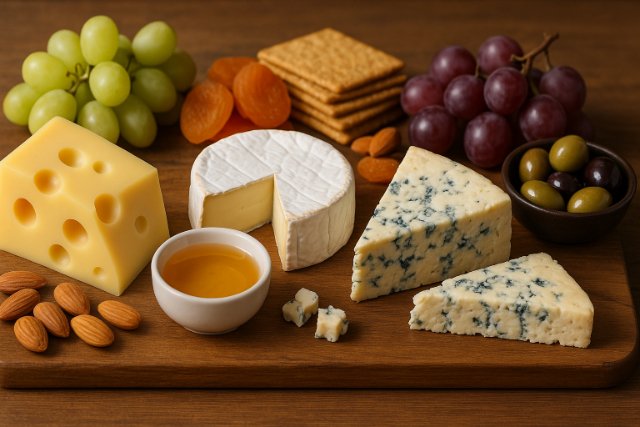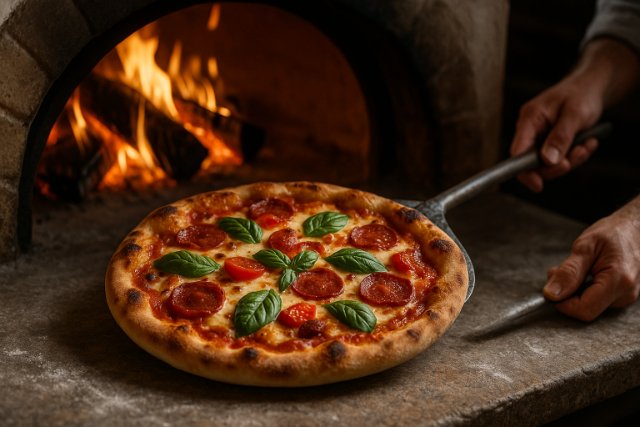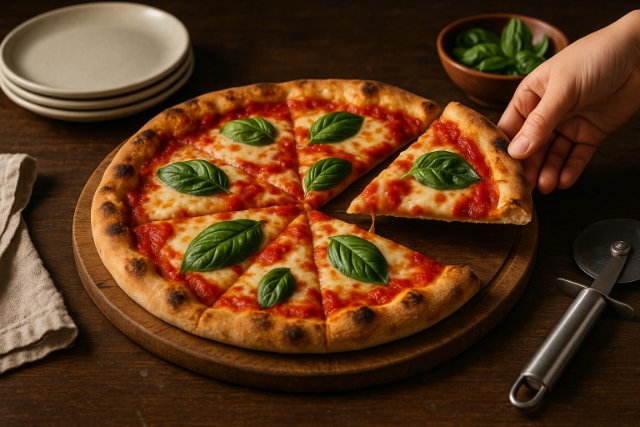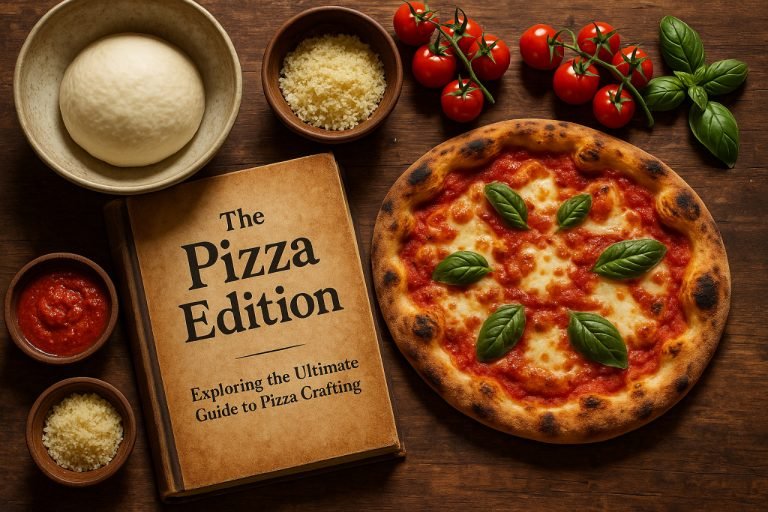Introduction
Welcome to The Pizza Edition, an in-depth journey into the world’s most beloved comfort food. Pizza is more than dough, sauce, and cheese; it is a universal language of flavor, tradition, and innovation. From the smoky crusts of Naples to the deep-dish creations of Chicago, every slice has a story to tell. This comprehensive guide explores every aspect of pizza, including preparation, regional styles, ingredients, modern innovations, and cultural influence. Whether you are a home cook or a pizza connoisseur, this article will help you appreciate, create, and master the art of pizza in all its forms.
Select the Right Base for the Perfect Pizza
A great pizza begins with its base because the dough determines texture, flavor, and overall quality. The right base sets the stage for whether your pizza will be crispy, chewy, or light and airy.
The dough’s character depends on flour type, hydration, yeast, and fermentation time. Traditional Neapolitan dough uses finely milled 00 flour with minimal yeast and long fermentation, creating a soft and elastic crust. New York–style dough, by contrast, uses high-gluten flour, resulting in a crisp outer layer with a chewy interior. For a rustic flavor, sourdough bases provide a tangy profile and complex texture through natural fermentation.
Modern diets have introduced alternatives such as gluten-free doughs made with rice or almond flour. Cauliflower crusts and whole-grain bases bring more fiber and nutrition to the table. Your dough defines the pizza’s identity, whether classic, gourmet, or health-focused.
| Type of Pizza Base | Key Characteristics | Best For |
| Neapolitan | Soft, chewy, light | Wood-fired pizzas |
| New York–style | Foldable, crisp edges | Street slices |
| Sourdough | Tangy, airy texture | Gourmet pizzerias |
| Gluten-free | Nutty, light texture | Dietary options |
| Whole-grain | Earthy, dense flavor | Health-focused recipes |
Craft the Perfect Pizza Sauce
The sauce is the heart of a pizza. It defines the balance of flavors and enhances the base and cheese without overpowering them.
Start with ripe, high-quality tomatoes such as San Marzano varieties known for their sweetness and low acidity. Blend them into a smooth base and season with olive oil, salt, and herbs. The choice between cooked and uncooked sauce depends on style. Neapolitan pizza often uses raw tomato sauce that cooks directly in the oven’s high heat, while New York–style pizza typically features a simmered sauce enriched with garlic, oregano, and red pepper.
For variety, try white sauces made with ricotta or béchamel, green pesto with basil and pine nuts, or spicy arrabbiata for a bold twist. The sauce should complement the other elements, not dominate them. Too much sauce makes a soggy crust, while too little leaves the pizza dry. Perfecting this balance creates harmony in every bite.
Choose Quality Cheeses and Pairings

Cheese transforms pizza into a masterpiece of texture and flavor. The type of cheese you choose affects not only taste but also how the pizza melts and browns.
Mozzarella is the most popular choice. Fresh mozzarella offers a creamy, milky taste, ideal for Neapolitan pizza. Low-moisture mozzarella provides stretch and structure, making it perfect for New York–style pizzas. Other cheeses like provolone, ricotta, parmesan, and pecorino each contribute unique characteristics. Provolone adds tanginess, ricotta delivers creaminess, and parmesan gives a sharp, nutty finish.
Combining multiple cheeses creates deeper layers of flavor. A blend of mozzarella, fontina, and gorgonzola gives a rich and savory result. Vegan options made from cashews or coconut are also improving in quality and meltability, allowing dairy-free pizza lovers to enjoy the same satisfaction.
| Cheese Type | Flavor Profile | Melting Quality | Best Used For |
| Fresh Mozzarella | Mild, milky | Excellent | Neapolitan pizzas |
| Low-Moisture Mozzarella | Savory, stretchy | Very high | New York–style pizzas |
| Ricotta | Creamy, delicate | Moderate | White pizzas |
| Gorgonzola | Bold, tangy | Moderate | Gourmet toppings |
| Parmesan | Nutty, salty | Low | Finishing touch |
Cheese pairs beautifully with other flavor enhancers. Drizzle truffle oil for richness, honey for a sweet balance, or balsamic reduction for a touch of acidity. Cheese is both a topping and an experience, evolving in flavor as it melts and browns.
Select the Finest Toppings with Flavor Harmony
Toppings are the creative heart of a pizza, where each ingredient adds character and depth. Balance is essential so that no topping overpowers another.
Begin by deciding the flavor profile you want. For a classic touch, use pepperoni, mushrooms, onions, and bell peppers. For a more refined flavor, try prosciutto, artichokes, or arugula. Combine textures like crispy bacon with soft mozzarella or roasted vegetables with fresh greens to keep every bite interesting.
Timing matters when applying toppings. Add water-rich ingredients such as tomatoes or spinach near the end of baking to avoid sogginess. Pre-cook meats like sausage or chicken to enhance flavor and ensure they are fully cooked.
Internationally inspired toppings open even more possibilities. Indian-style pizzas can feature tandoori chicken or paneer. Asian-inspired pizzas might include teriyaki chicken and sesame seeds. Mediterranean versions often combine olives, feta, and sundried tomatoes. The goal is balance, where salt, fat, and acidity blend into a satisfying harmony.
Master the Art of Baking the Pizza

Baking transforms raw dough and ingredients into a perfect, flavorful whole. The process combines heat, timing, and technique to achieve professional results.
Traditional wood-fired ovens reach temperatures up to 900°F (480°C), baking pizzas in under two minutes and creating a soft, charred crust. Home ovens can mimic this using pizza stones or steel plates that retain heat and crisp the base. A preheated stone or steel makes all the difference in texture.
The surface type affects the final result. Stones distribute heat evenly for uniform cooking, while steels promote faster browning. Convection ovens with high-heat settings can also yield professional-quality results when properly preheated.
Temperature and thickness must work together. Thin-crust pizzas bake quickly at high heat, while deep-dish or pan pizzas require longer, slower baking to ensure even cooking. Proper airflow inside the oven keeps the crust crisp and toppings perfectly melted. Baking is the defining moment when all your effort culminates into an aromatic, golden-brown masterpiece.
Experiment with Regional Pizza Styles
Each region has its own unique approach to pizza, shaped by culture, ingredients, and technique.
Neapolitan Pizza originates from Naples. It features a soft, slightly charred crust and minimal toppings such as San Marzano tomatoes, fresh mozzarella, basil, and olive oil.
New York–Style Pizza evolved from Italian roots into large, thin, foldable slices with robust tomato sauce and stretchy cheese.
Chicago Deep Dish flips tradition by layering cheese, toppings, and sauce inside a buttery, thick crust, creating a pie-like structure.
Sicilian Pizza is rectangular, with a thick and airy texture resembling focaccia. It often uses generous tomato sauce and cheese coverage.
California Pizza is known for innovation, with creative toppings like smoked salmon, goat cheese, and arugula.
Each variation represents how local culture adapts the same concept differently. Exploring them deepens appreciation for pizza’s versatility and global appeal.
Integrate Modern Pizza Innovations
Pizza continues to evolve with technology, science, and new consumer preferences.
Artisan bakers now explore long fermentation techniques using wild yeast for complex flavors and better digestibility. Robotic pizza machines assemble and bake pizzas with precision, while smart ovens adjust heat dynamically to replicate traditional wood-fired conditions.
Plant-based trends have also transformed pizza making. Vegan cheeses, meat substitutes, and vegetable-based crusts appeal to modern dietary choices. Gluten-free and keto-friendly recipes ensure that pizza remains accessible to everyone.
Sustainability is another growing focus. Pizzerias now source ingredients locally, reduce food waste, and use eco-friendly packaging. Innovation allows pizza to remain timeless while adapting to the values and needs of modern diners.
Perfect Your Pizza Presentation and Serving

Presentation enhances the dining experience and elevates the simplest pizza into a memorable dish.
A clean, even cut improves both appearance and ease of eating. Choose the right shape, whether classic wedges, square slices, or creative spirals. Garnish thoughtfully with fresh herbs, olive oil, or grated cheese to highlight color and aroma.
Let your pizza rest briefly after baking so the cheese sets and the crust stays crisp. Pairing it with sides like caprese salad, roasted vegetables, or garlic bread rounds out the meal beautifully.
Beverage pairings also matter. Light red wines such as Chianti complement tomato-based pizzas, while crisp beers enhance richer, cheesy varieties. Serving on rustic wooden boards or stone platters adds visual appeal and warmth.
Pizza presentation is about more than aesthetics; it tells the story of craftsmanship and passion behind every slice.
Understand the Cultural and Global Impact of Pizza
Pizza has grown beyond its Italian origins to become a worldwide phenomenon. It bridges cultures and adapts to local tastes wherever it travels.
In Italy, pizza symbolizes simplicity, community, and pride in tradition. In the United States, it represents creativity, diversity, and modern comfort. Across Asia, the Middle East, and South America, local chefs reimagine pizza with native spices, sauces, and techniques.
Pizza’s cultural influence extends to entertainment and daily life. It appears in movies, advertisements, and celebrations. Events such as World Pizza Day unite fans across continents, proving that pizza is more than food; it is a shared global experience.
By understanding pizza’s global impact, we appreciate how one dish can embody both heritage and innovation at once.
Conclusion
The Pizza Edition celebrates every aspect of pizza creation, from the art of dough-making to the excitement of flavor experimentation. Every ingredient, every technique, and every regional style adds a new chapter to the story of this timeless dish. Whether enjoyed as a quick meal or as a culinary centerpiece, pizza connects people through taste, creativity, and shared enjoyment.
By mastering its foundations and embracing innovation, you can craft your own perfect version of pizza that reflects both tradition and individuality. The journey of The Pizza Edition reminds us that pizza will always remain a symbol of comfort, culture, and culinary passion.
Related Article: From Sharp to Stinky: A Journey through the Different Types of Specialty Cheeses
Explore more insightful and valuable content on our blog VeoTag.com! Stay updated with helpful tips, expert advice, and in-depth articles that enhance your knowledge.
Read Also:
1. Trade Value Chart: Accurately Determine Your Car’s
2. Scooped Bagel: The Complete Guide to Making, Ordering
3. vyvymanga: Everything You Need to Know About the Manga Platform
4. ALDI Weekly Ad: Deals & Flyer Guide
5. kiddle: The Safe Search Engine That Makes the Web Kid-Friendly
FAQ’s
Neapolitan pizza uses finely milled 00 flour, fresh mozzarella, and raw tomato sauce. It cooks at extremely high heat for less than two minutes, creating a soft crust with charred spots.
Use a preheated pizza stone or steel and bake at the highest temperature your oven allows. Avoid excess sauce or wet toppings to maintain crispness.
High-quality flour, proper hydration, and slow fermentation are key. Allowing the dough to rest and rise naturally enhances texture and flavor.
Yes. Choose whole-grain or cauliflower crusts, light cheeses, and plenty of vegetables. Moderate portion sizes also help balance nutrition.
Store slices in an airtight container in the refrigerator. Reheat in a skillet or oven to restore crispness rather than using a microwave.
Plant-based ingredients, gluten-free crusts, sustainable packaging, and AI-powered baking systems are redefining modern pizza making.

